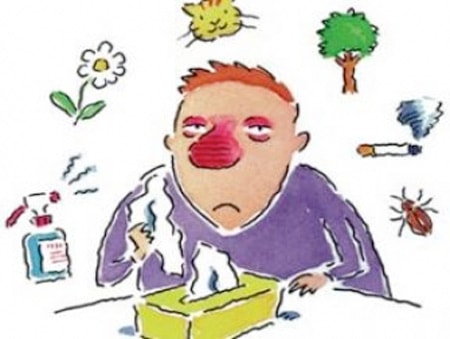20% of the population suffers from allergies
Associate Professor, Dr. Tran Hau Khang, Director of the Central Dermatology Hospital, said that currently, about 20% of Vietnam's population suffers from allergies and the age group with the highest incidence of the disease is 12-15 years old.
 |
At the seminar "Update on treatment of chronic idiopathic urticaria and allergic rhinitis" held in Hanoi on the afternoon of July 17, 2014, Associate Professor, Dr. Tran Hau Khang said: The disease usually starts before the age of 20 (80% of cases), the average age of onset is from 8 to 11 years old and the age of 12 to 15 has a high incidence of the disease. The frequency of the disease in urban areas is also higher than in rural areas.
Allergic diseases are quite common in modern society and climate change, environmental pollution, and increasingly dense population density are the factors that cause allergies.
One of the common skin allergies that Associate Professor Dr. Tran Hau Khang himself suffered from was acute allergies. “I had difficulty breathing and hives all over my body. I had been researching hives for many years, but the first time I had acute hives, I was confused,” Associate Professor Dr. Khang shared.
According to Dr. Henry Foong, a dermatologist, hives occur due to the reaction of blood vessels in the skin with a complex mechanism related to histamine. The disease starts under 6 weeks is acute hives, over 6 weeks is chronic. Most of the time it is acute hives and heals on its own. Chronic hives have a duration of 1 year (70%); 9% is from 1-5 years and over 5 years is 1-14%.
If the cause is unknown, it is called idiopathic urticaria (more than 50%), the rest is urticaria due to food reactions; drug reactions, infections (drugs); blood transfusions, contrast agents, physical urticaria (pressure, cold, heat, water, urticaria due to water; sunlight, vibration, exertion)...
Also growing rapidly is allergic rhinitis. According to statistics from the World Health Organization, allergic rhinitis and asthma have doubled in the past 20 years. This is the most common respiratory disease, accounting for 17-25% of the population.
Based on the time of year it occurs, allergic rhinitis is divided into seasonal allergic rhinitis (caused by allergens such as pollen) and perennial allergic rhinitis (caused by allergens that appear regularly in life).
Although reducing environmental allergen exposure is beneficial for patients with allergic rhinitis, it is not possible to completely avoid allergen exposure.
Many people still mistake the symptoms of allergic rhinitis such as sneezing, runny nose, stuffy nose for a cold, so they rush to use cold medicines to relieve pain and reduce fever, leading to worsening of allergic symptoms, greatly affecting their spirit and quality of life.
Therefore, in addition to going to the doctor to get the right prescription when the disease first appears, experts also recommend raising awareness of disease prevention (keeping the body warm, daily oral hygiene), proactively controlling the environment (avoiding sudden temperature changes, keeping the environment clean), staying away from allergens such as foods that have caused allergies...
According to Dan Tri






